What Is Thinset Mortar? (Types & Advantages Explained)
-
Codee Chessher
- Last updated:
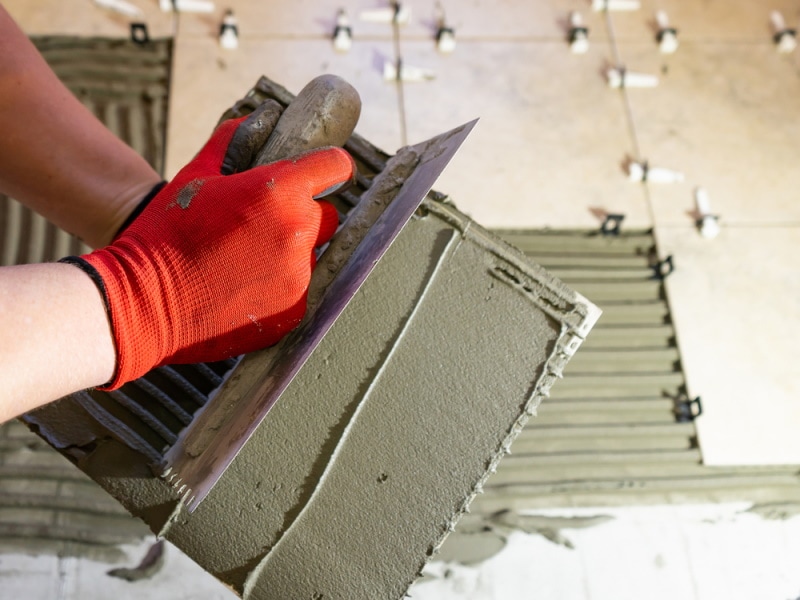
When you’re installing tile, thinset mortar is one of the best choices. With superior water resistance and an easy-to-apply consistency, it can be easy to gloss over just what the stuff is.
What is thinset mortar made of, and how does it compare to similar products for laying tile? Let’s learn the answers to both of those questions and cover more relevant info in the process below.
What Is Thinset Mortar? How Does It Work?
Thinset mortar is a bonding agent created from a combination of cement, fine-graded sand, and water retention additives. Often called thinset, the compound is mainly used to bond tile or natural stone panels to walls. This may include outdoor veneers, bathroom finishes, or various areas throughout the home.
Unlike grout, thinset is designed to adhere tile or stone to cement or other bare finishes. The water retention agent in it helps to prevent moisture-related issues like mold, which is perfect for bathrooms. Notches are created with a special trowel during installation, and these deep grooves help create a more solid bond between the tile and your backboard/substrate.
Thinset mortar is often compared to grout and epoxy because they’re used in similar settings and jobs, so let’s compare them in neat little sections below. After, we’ll get into how different additives can create all-new types of thinset mortar.
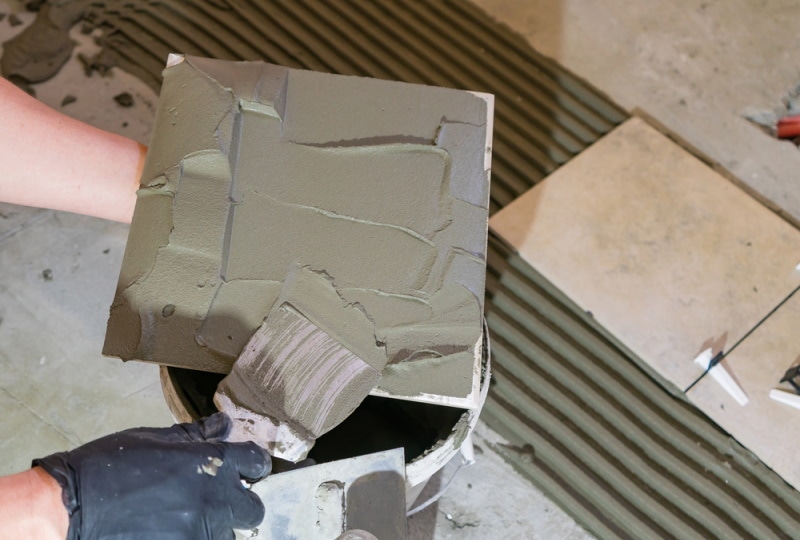
Thinset Mortar vs. Grout
This is a trick question because they serve two entirely different purposes. Thinset mortar is an adhesive, while grout is not. Grout simply fills the space between tiles or stones, while thinset mortar or a similar adhesive is used to physically bond them together.
Thinset Mortar vs. Epoxy
Epoxy is a more upscale way to adhere tile and walkways, and it’s particularly great for high-traffic flooring. It creates a solid chemical bond between the tile and substrate through a two-part chemical formula but costs a pretty penny. Thinset mortar, by contrast, is easier to work with but doesn’t offer the heavy-duty durability of epoxy.
Mortar vs. Thinset Mortar
The ultimate test: is thinset mortar better than mortar? In most situations, yes! Thinset mortar is smoother and thinner but offers similar adhesion to regular ol’ mortar. For tile, smooth, even layers are vital for optimal adhesion. Mortar typically also lacks the water resistance of thinset mortar.
What Are the Different Types of Thinset Mortar?
Thinset mortar is classed into two types: modified and unmodified. This refers to whether additives were put into the mortar to grant extra benefits. Let’s briefly cover the key differences between the two.
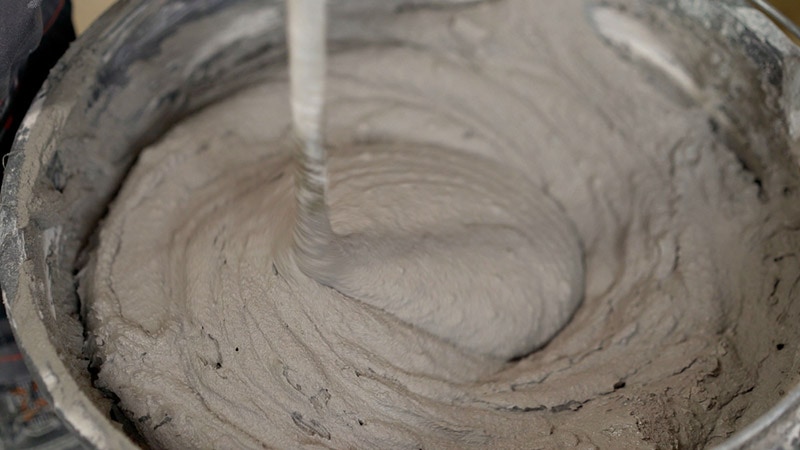
Modified Thinset Mortar
Modified thinset mortar usually gets an upgrade in the form of polymers and other chemicals to create a more flexible chemical bond, which is good for structural durability and waterproofing. This has the nice side effect of making the mortar easier to spread and work with, making it an even better choice for tile installation. For all these benefits, you’ll pay much more than its unmodified counterpart.
Unmodified Thinset Mortar
The OG thinset mortar is made from a blend of regular cement, fine sand, and water retention additives. Despite all this, it’s generally inferior to modified thinset for indoor applications – the bond simply isn’t as waterproof. Unmodified thinset also cures faster than modified, giving you a shorter window to get the job done.
Where Is Thinset Mortar Used?
Tile installation is the main place you’ll use thinset mortar, but far from the only one. Including tile, let’s explore some of the places you’ll see thinset mortar used.
Tile Installation
Thinset mortar is an easily workable adhesive used to quickly adhere tiles to walls and floors. Porcelain and ceramic tiles are the most popular type of tile used with thinset, but not the only ones.
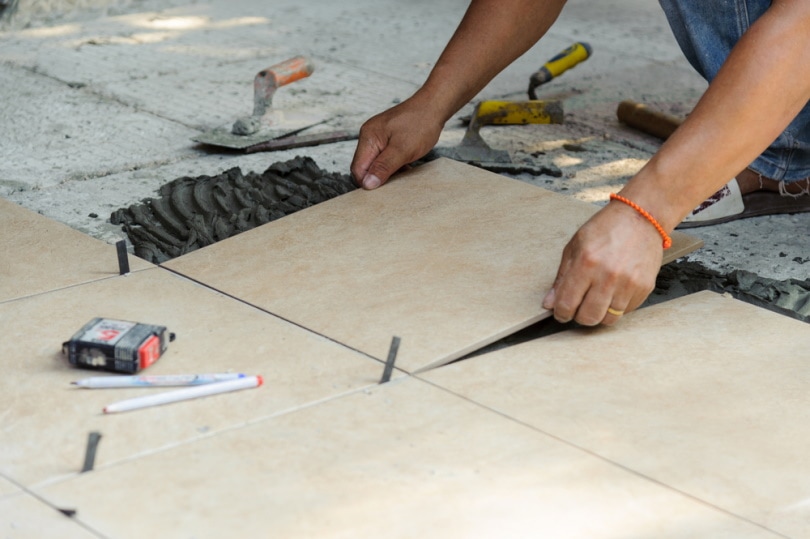
Natural Stone Veneer
If you’ve ever seen a house that looks like it’s made of natural stone, you were probably looking at natural stone veneer. You can get these done for portions of a house, on gates, windows, fences, and more. Thinset mortar is really good for stone veneer tiles because it creates a strong and nearly waterproof bond between the substrate and tile.
 Advantages of Thinset Mortar
Advantages of Thinset Mortar
- Thin, firm consistency: Easily spread between tiles, thinset mortar creates a slim but rock-solid layer of adhesion to the substrate.
- Strong & water-resistant: Modified thinset has the best water resistance, but all thinset is generally regarded as water-resistant.
- Multiple types available: Unmodified thinset is cheap and therefore good for high surface-area jobs, while modified is better for moisture-specific areas like backsplashes and bathrooms.
- Widely compatible: Thinset works for bonding stone, porcelain, ceramic, and additives can even make it work with plywood.
Disadvantages of Thinset Mortar
- Difficult to remove: Ironically, the tough, waterproof layer of adhesion you wanted to make in the first place is hard to take off.
- Not the most robust adhesive: Thinset mortar can’t hold a candle to the durability of epoxy and may not be suitable for high-traffic areas.
- Price: The best modified thinset mortars cost a pretty penny, and may make epoxy seem like a tempting alternative.
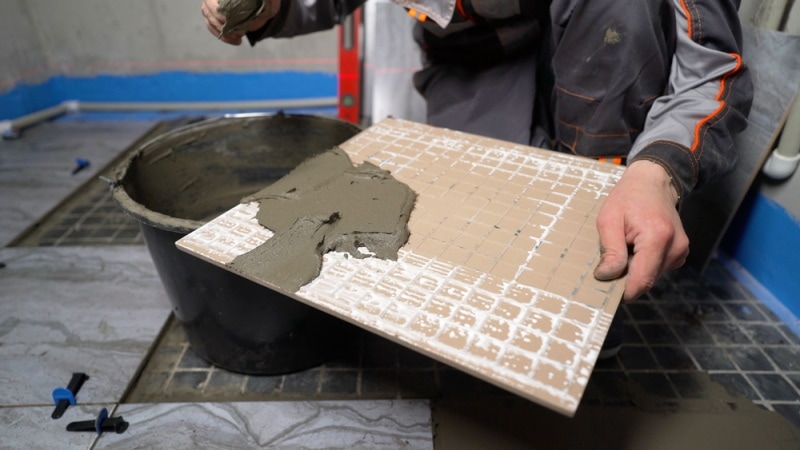
Frequently Asked Questions (FAQs)
When Should I Use Thinset Mortar Instead of Medium or Regular Mortar?
Use thinset mortar anywhere you want to create a solid, waterproof bond, but not with anything that needs heavy-duty durability. It’s a pretty simple compound that gets the job done, but it’s not a structural element. For load-bearing renovations, you’ll want to reach for the regular mortar or maybe cement.
How Long Does It Take for Thinset Mortar to Set/Cure?
Thinset mortar starts to dry as quickly as 30 minutes after installation, but it takes a day or two before you can grout the tile. If you try before, the mortar might not be adequately cured. You can usually see at the edges of the tile if the mortar is still moist or not.
How Thin Should Thinset Mortar Be Applied During Tile Installation?
Most mortar manufacturers recommend applying thinset mortar in layers no thicker than 3/16 of an inch. If you need thicker layers, you might want to look into regular mortar. You start to lose the elasticity and waterproofing with thicker layers of thinset mortar.
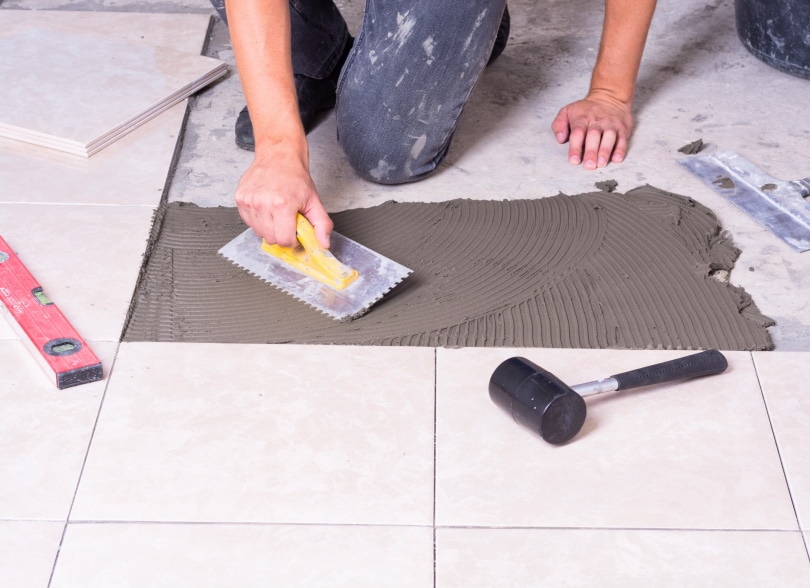
Conclusion
Thinset mortar is one of the best choices for tile installation in bathrooms and for installing natural stone veneer outdoors. Its water resistance, ease of use, and slick consistency make it a top competitor against epoxy, but a more affordable one with less durability.
Featured Image Credit: Angurt, Shutterstock
Contents

 Advantages of Thinset Mortar
Advantages of Thinset Mortar